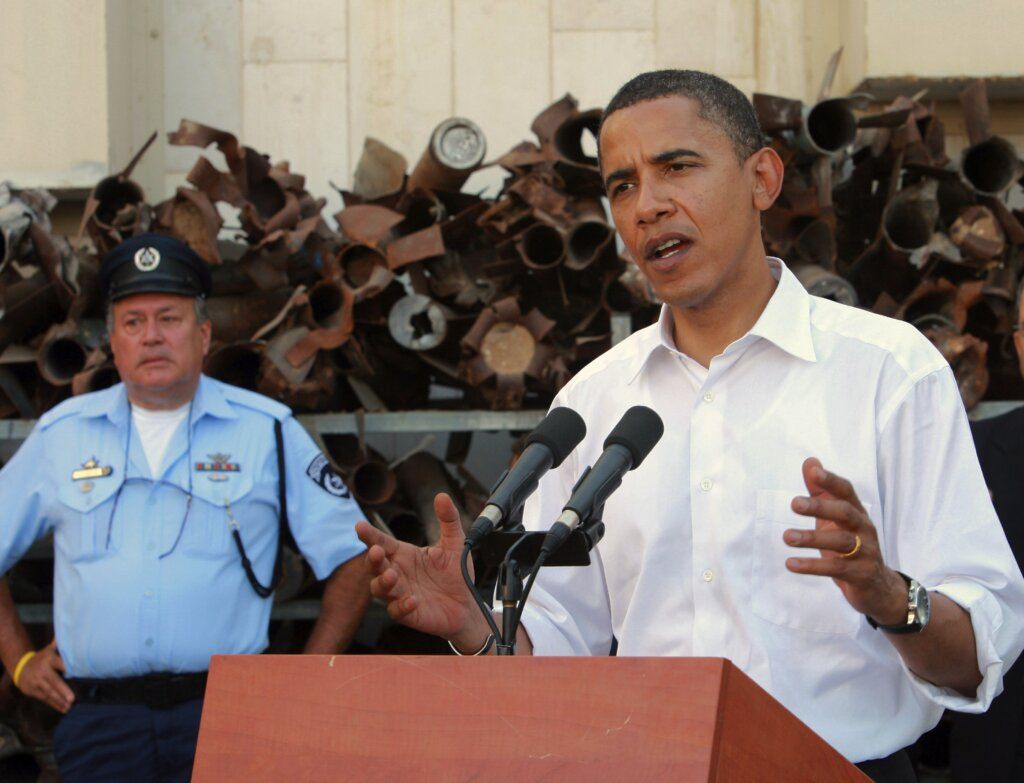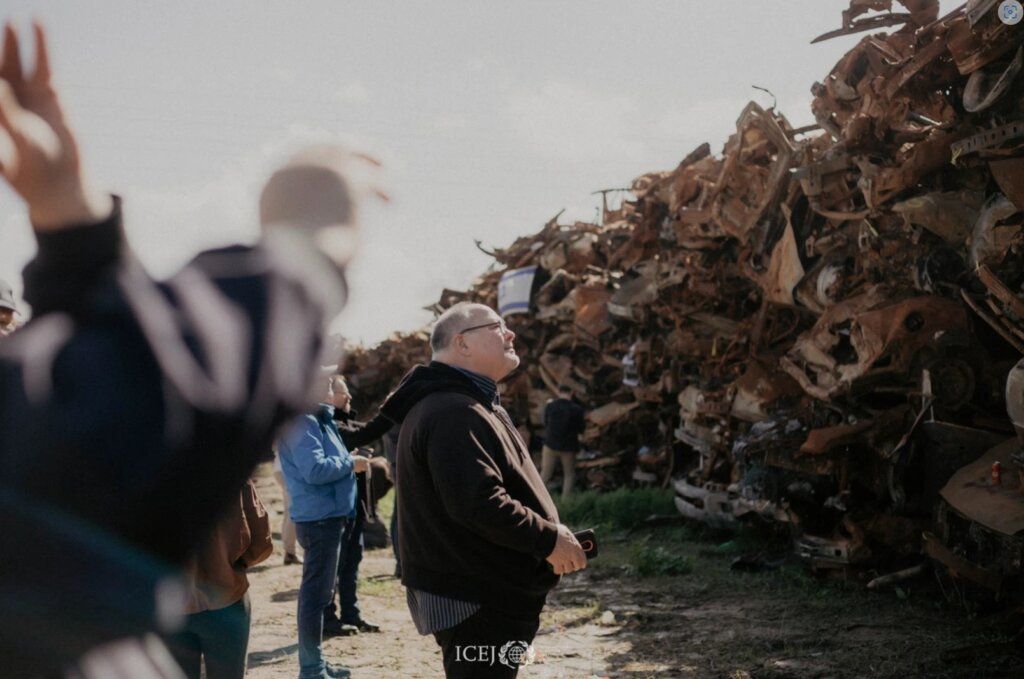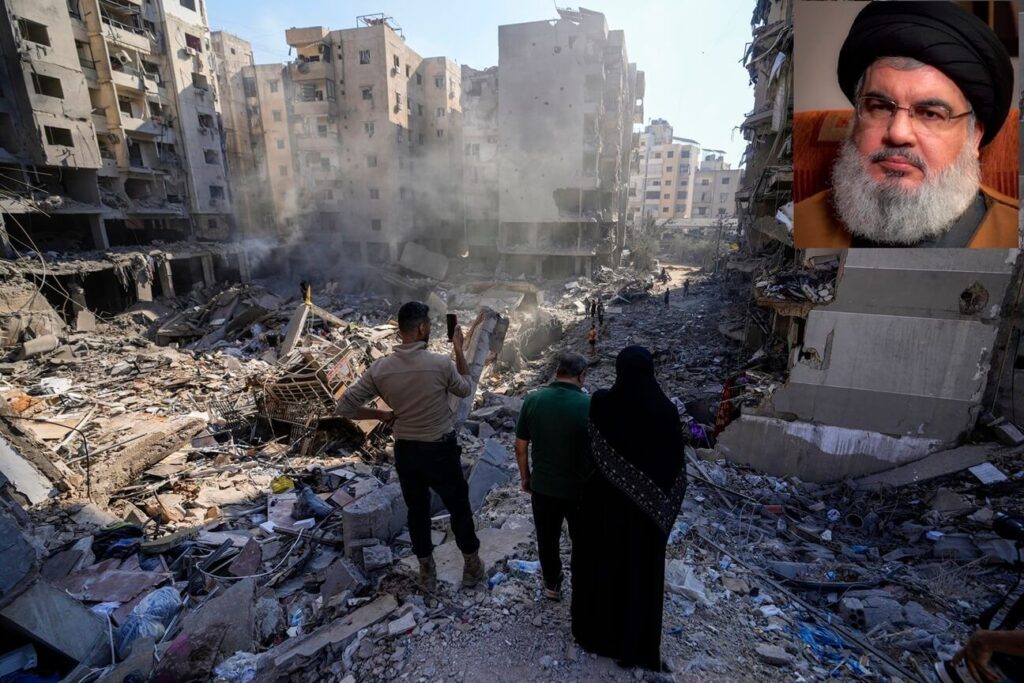
By David Parsons, ICEJ Senior Vice President and Spokesman
Over recent decades, official visitors to Israel felt obliged to make a pilgrimage to Sderot, near Gaza, to view the rusting heaps of Hamas rockets on display behind the town’s police station. Even presidential candidate Barack Obama stood there in 2008, insisting he would never tolerate his daughters living under the constant rocket threat faced by Israelis in the western Negev.
Today, that police station no longer exists. It was overrun by Hamas terrorists during their mass invasion last October 7. As the one-year anniversary of that dark day approaches, a memorial is being hastily erected on the levelled station to honour the 20 heroic police officers who fell defending their city.

Now, visitors are drawn instead to new pilgrimage sites, such as the “car graveyard” near Tekumah, where the crushed remains of 1 500 burned-out vehicles collected from surrounding roadsides after the October 7 massacre are stacked 9m high – each rusted frame testifying to the many innocent lives lost that day. A few kilometres away at the Nova music festival site, a haunting silence still lingers in the place where 364 civilians were slaughtered and 40 taken hostage by Hamas on that “Black Shabbat”.
One year ago, as Israelis rested on the holy day of Simchat Torah, some 6 000 Hamas and Islamic Jihad militiamen breached the Gaza security fence and poured into Israel to murder, maim and seize hostages. The so-called “al-Aqsa Storm” was more successful than even Hamas expected. Over 1 200 Israelis were killed, while 251 were abducted back into the terror tunnels of Gaza. It took three days for the IDF to secure the border area. The mass atrocities shook all of Israel, leaving everyone terrified of home invasions by armed jihadists and an even bigger assault from Hizbullah in Lebanon.
The shocking carnage last October 7 marked the worst pogrom against the Jewish people since the Holocaust. Children were shot in front of their parents, and parents in front of their children. Entire families were burned alive. Women were gang raped. Frail elderly Holocaust survivors were brutally executed at point-blank range. Babies were bludgeoned and beheaded.
Even so, the resulting death toll could have been worse, as the great secrecy by Hamas over their operation also surprised Hezbollah, which was not ready for all-out war. But by the next day, Hezbollah joined the fray with relentless rocket barrages across the border, and other Iranian proxy militias soon followed. This left Israel facing a seven-front war – with the threat of missile, drone and terror attacks emanating from Gaza, the West Bank, Lebanon, Syria, Iraq, Yemen and Iran itself.

In response to October 7, the IDF immediately carried out its largest-ever mobilisation of 350 000 reservists and evacuated tens of thousands of Israeli civilians from the Gaza and Lebanon borders. These swift actions deterred Hezbollah from invading the North with its elite Radwan forces, and allowed the IDF to concentrate first on destroying Hamas in Gaza and returning the hostages. However, the pace of battle was slow due to the complexity of tunnel warfare, the presence of the hostages, and the international community’s insistence that over two million Gazan civilians remain on the battlefield – allowing Hamas to continue using them as human shields.
As the fighting in Gaza lumbered on, Israel also has faced widespread condemnation by world leaders, charges of genocide and war crimes in The Hague, and a global wave of antisemitism on a truly appalling scale. Even more concerning has been the often-frosty approach of the Biden administration, as sorely needed US arms shipments were slowed and its repeated criticisms and demands for a ceasefire seemed to help preserve Hamas as a fighting force and ruler of Gaza.
But perhaps the most troubling aspect of this conflict for Israelis was the failure of the nation’s renowned intelligence services to detect and foil the Hamas invasion plans. An official commission of inquiry has yet to be convened, but it is already clear there were obvious warning signs that were tragically ignored. This was largely due to the prevailing “group think” among senior Israeli political and military leaders that Hamas was deterred from attacking by the IDF’s superior might and the building boom in Gaza.
Thus, October 7 caused Israelis to lose trust in their leaders. Prime Minister Benjamin Netanyahu was singled out for allowing Qatar to pour money into Gaza and his reluctance to accept any blame for the brutal Hamas onslaught.
The edginess and doubts among Israelis started to turn around, however, beginning in mid-April.
Restored confidence and hope
At the time, the IDF had successfully targeted two Iranian generals in Damascus, so Tehran retaliated by launching over 350 ballistic and cruise missiles and armed drones in its first-ever direct attack on Israel. Yet, Israel and its allies managed to shoot down 99% of the missiles and drones. Ever since then, Israel has begun to find its footing and regain its confidence.
In fact, over the past six months Israel has managed to carry out incredible feats that have sent its enemies reeling. The costly intelligence failure of October 7 has given way to a series of legendary intelligence successes on par with Israel’s preemptive strikes on the Egyptian air force in June 1967 and the Entebbe rescue mission of July 1976.
This includes eliminating Hamas politburo chief Ismail Haniyeh during a visit to Tehran, and finally catching up to notorious Hamas terrorist Muhammad Deif inside Gaza. The IDF also has taken out the senior military commander of Hezbollah, Fuad Shukur, along with its deputy commander Ibrahim Aqil, plus the militia’s rocket chief, drone chief, intelligence chief, finance chief, Radwan force commander, southern front commander, and finally the supreme leader himself, Sheikh Hassan Nasrallah.
In other remarkable operations, the Israeli air force recently destroyed thousands of rockets just minutes before they were to be launched into Israel. Elite IDF troops also landed inside Syria to blow up an underground guided-missile factory. Soon after, the Mossad pulled off a spellbinding covert operation involving rigged pagers and walkie-talkies simultaneously exploding in the hands of thousands of Hezbullah operatives all over Lebanon. Just days later, Israel struck a high-priority target list of over 2 000 Hezbullah arms depots and military sites in a mere 48 hours.
And in its latest sensational achievement, Israel’s air defenses disposed of another massive wave of over 180 Iranian ballistic missiles – the largest such barrage ever launched at a nation.
Taken together, these impressive operations have dealt staggering blows to Hezbullah, with its upper command structure and half its rocket arsenal wiped out. Iran’s most lethal, effective forward threat against Israel is collapsing and hopes are renewed that Lebanon can actually work itself free of Hezbollah’s grip one day. Meanwhile, Hamas has been severely weakened in Gaza and its besieged leader Yahya Sinwar may soon be killed or driven into exile. Iran is also now in Israel’s direct line of fire, and the shadow of fear its “axis of resistance” cast over the whole region is surely dissipating.

One year after that dark day of October 7, Israel is settling old scores with radical Islamic terror militias that have the innocent blood of many nations on their hands. They are fighting a just war by moral means and with dazzling precision. Even the Sunni Arab world is cheering Nasrallah’s death and marveling at Israel’s hi-tech wizardry. There is also renewed hope the region can return to the path of reconciliation via the Abraham Accords.
Still, there are more battles ahead and Israelis will need more time to truly get past the shock of the October 7 massacres. Indeed, the wounds inflicted that dark Saturday will remain open so long as there are hostages still held in Gaza.
Please help us to keep on publishing news that brings Hope in Jesus:
>> Donate >> Become a Super Subscriber
VISIT OUR YOUTUBE CHANNEL: https://www.youtube.com/gatewaynews100
COMMENTING GUIDELINES
You are welcome to engage with our articles by making comments [in the Comments area below] that add value to a topic or to engage in thoughtful, constructive discussion with fellow readers. Comments that contain vulgar language will be removed. Hostile, demeaning, disrespectful, propagandistic and off-topic comments may also be moved. This is a Christian website and if you wish to vent against Christian beliefs you have probably come to the wrong place and your comments may be removed. Ongoing debates and repetitiveness will not be tolerated. You will also disqualify yourself from commenting if you engage in trolling.






